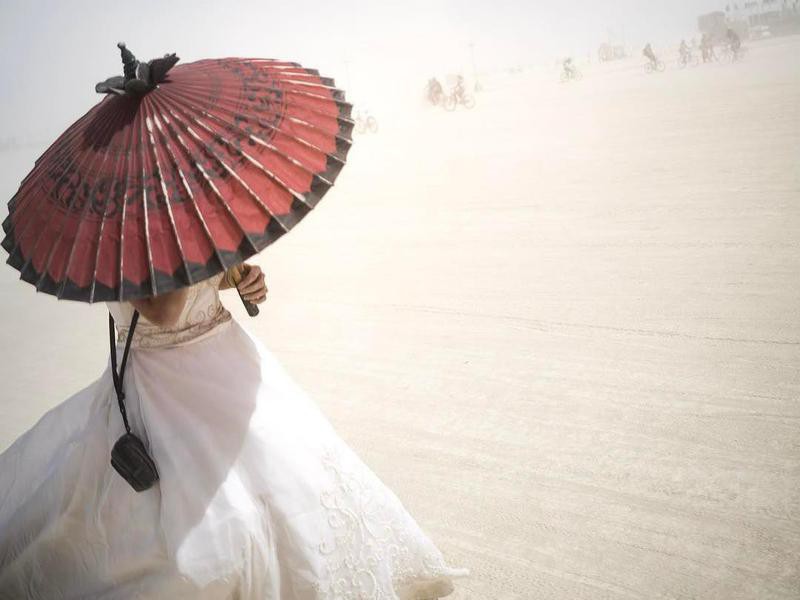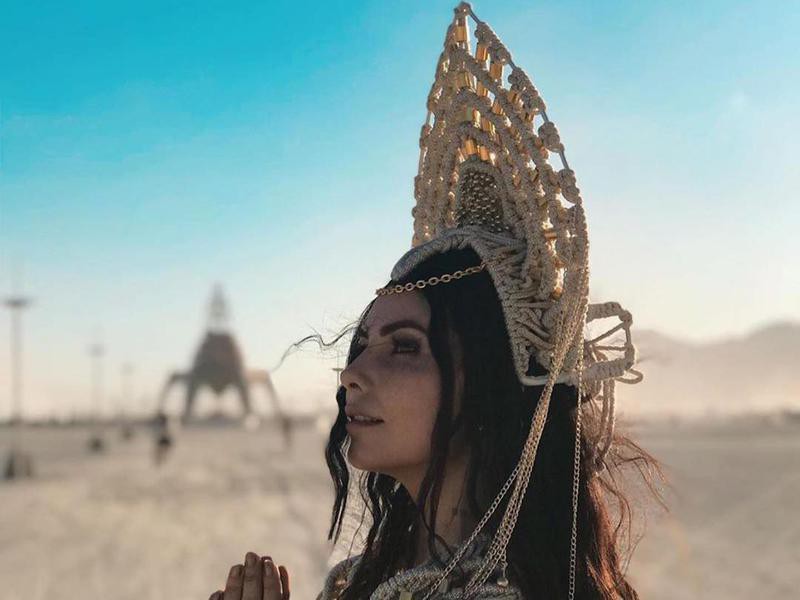2020 Burning Man - Multiverse
CANCELED:Burning Man reveals 2020 theme
Next year's edition of the 80,000-capacity event will be centred around what organisers call "the Multiverse", following on from this year's 'Metamorphoses' theme.
"The 2020 Burning Man event theme explores the quantum kaleidoscope of possibility, the infinite realities of the multiverse, and our own superpositioning as actors and observers in the cosmic Cacophony of resonant strings," says a statement released by the festival.
"It’s an invitation to ponder the real, the surreal and the pataphysical, and a chance to encounter our alternate selves who may have followed, or are following, or will follow different decision-paths to divergent Black Rock City realities. Welcome to the Multiverse!"
You can find more information on next year's event below.
Carl Cox last month shared a recording of his set from Burning Man 2019's Playground BRC.
Over the summer, Burning Man was forced to fight mandatory regulations that the government tried to put in place for this year's event including government-sanctioned searches of all attendees.
Login * Instagram
Welcome back to Instagram. Sign in to check out what your friends, family & interests have been capturing & sharing around the world.
These Photos Prove How Wild Burning Man Really Is
National Geographic photographer Aaron Huey went to Burning Man and all he brought back were these awesome photos.
Burning Man, an annual event in the desert of Nevada, describes itself as a "temporary metropolis dedicated to community, art, self-expression, and self-reliance." What started in 1986 as two friends burning an eight-foot statue on a San Francisco beach has grown, quite literally, into a statue as tall as 105 feet that is burned down at the end of each event around the summer solstice. Live through some amazing moments at Burning Man 2016 and get inspired to attend this year's event.
Options for purchasing tickets are detailed on the Burning Man website. Ticket prices vary from a few hundred to a few thousand dollars. If you’re parking a vehicle, you’ll also need a vehicle pass.
Survival Essentials
Water! (Veterans say 1.5 gallons per person per day; we used about a gallon per person.) Enough easy-to-prepare-and-eat food for your entire stay. Sunscreen. Sanitary wipes. Hat. Headlamp. Dust mask. Goggles. More than one pair of sunglasses. LED lights. Festive attire. Gifts. Trash bags (leave no trace).
Getting There
Most Burners drive, but you can also arrive by bus, taxi, or plane (a temporary airport operates at Black Rock City during the event)—and every year at least a few people parachute in. The website has detailed information and directions. Traffic tip: Expect to wait in line many hours while entering and leaving the event. For a shorter queue, arrive a day or two after the opening or stay an extra day.
Camping Options
From pitching a tent to parking a luxury RV, attendees have a spectrum of options. We rented a camper van from JUCY and found it extremely comfortable and convenient, and comparatively affordable. (Note: The camper doesn’t have a toilet or shower.)
Events based on the Burning Man ethos and experience are now held throughout the U.S. and around the world, including Australia, Austria, France, Israel, Japan, New Zealand, South Africa, and Ukraine.
75 Burning Man Photos That'll Blow Your Mind

Burning Man is so unique that it’s often difficult to find the right words to describe it. It's a global culture, a way of living and a thriving city that participants build from scratch every year. But it's also so much more than any of these descriptors suggest.
The best way to understand its principles of self-expression, creativity and community — besides attending in person, of course — is to see it depicted in photos. We're sharing 75 here that capture the otherworldly beauty and core tenets of this truly singular event.
event.
The central fixture of Burning Man is "The Man" himself, a towering sculpture with a triangular-shaped face that's ceremonially burned at the end of each event.
The first sculpture was built in 1986 by Larry Harvey and Jerry James out of scrap wood, and was torched on Baker Beach in San Francisco.
That inaugural year, the sculpture was 8 feet tall; in more recent years, it's reached nearly 40 feet in height.

The first year the wooden sculpture was set ablaze, about 10 bystanders were present. More than three decades later, how things have changed.
This 2019 image shows "The Man" burning in the distance, with hundreds of cars and thousands of people gathered around it.
Cousin it.

In 1990, after four years at Baker Beach, Burning Man organizers were told that their ritual could cause a wildfire. So the group decided to relocate to the Black Rock Desert, northeast of Reno, Nevada. The first year the burgeoning festival was held in the desert, it welcomed 90 attendees.

Aside from a brief stint at nearby Fly Ranch, Black Rock Desert has been the home of the event ever since, setting the scene with its stark and striking backdrop.
These days, the desert welcomes some 80,000 Burning Man participants each year

Early on, the event established itself as a platform for bold and daring fashion, a trend that continues today.

Burners take their looks to the next level with piercings and creative hair styles.

In the early 1990s, after Burning Man moved to Black Rock Desert, it also started to adopt more formal infrastructure. One way it did this was by establishing camps for festival-goers to stay in.
Today, many of these camps are interactive and themed, focused on everything from Elvis to bread-baking. This Brazilian-themed camp is called Favela.

An aerial perspective showcases the scope of Distrikt, a music- and arts-focused camp established in 2010.

/www/photos/pic1.jpg)













Comments
Post a Comment